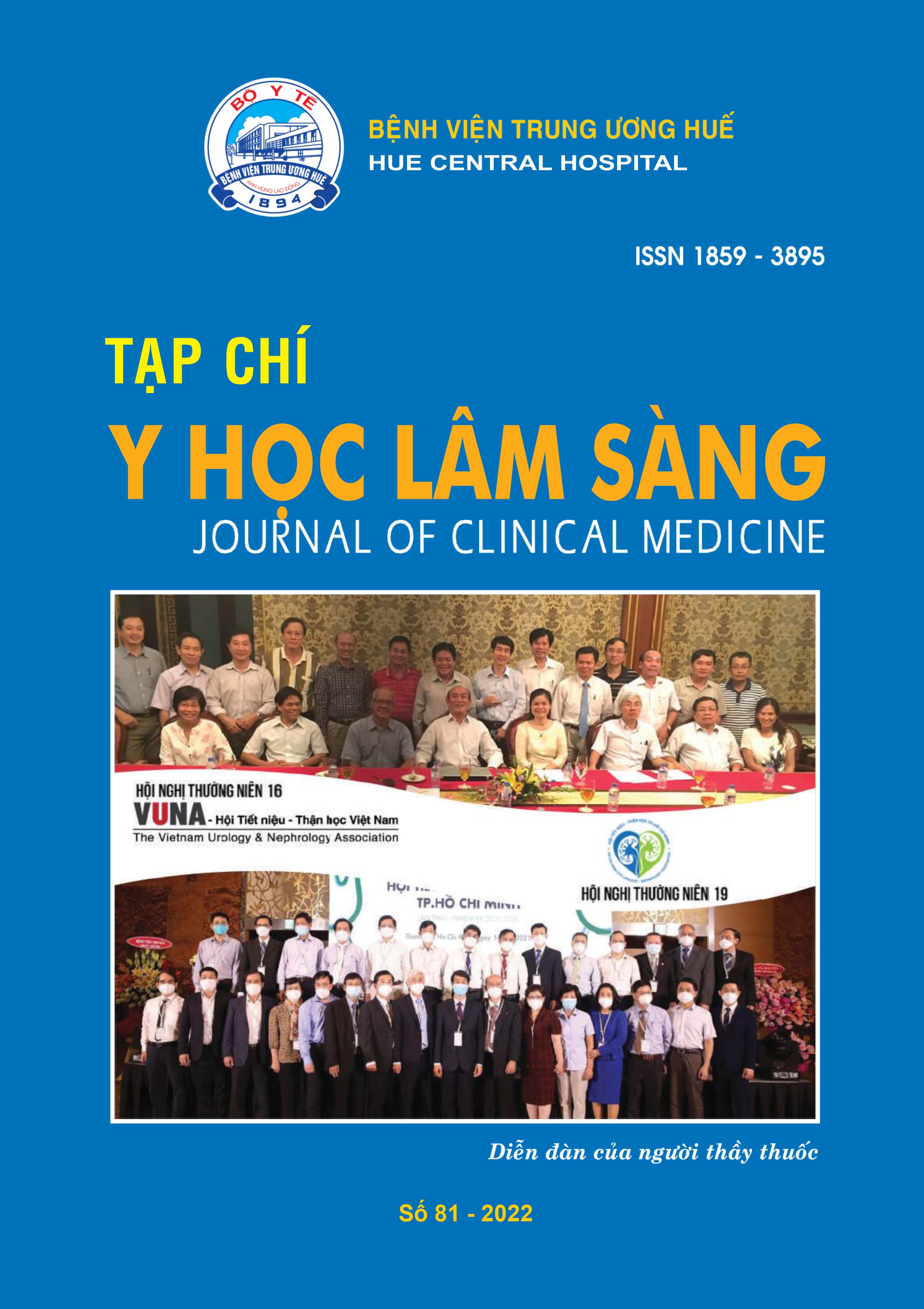Abstract
Background: This study was to evaluate the safety and efficacy of ultrasoundguided percutaneous nephrolithotomy (US - guided PCNL) in a modified lateral position for kidney stones.
Methods: This prospective study included 55 patients underwent PCNL with US - guided renal access in the modified lateral position from 2020 to 2022. The outcomes included the rate of successful access, complete stone clearance, operative characteristics, postoperative complications, and the need for an additional procedure.
Results: Median age was 53 years and males were 60%. Median stone burden was 3170 mm3 and 90.9% of all patients were graded as 1 or 2 regarding the Guy’s stone score. 32 patients required one puncture and 15 patients required two. Six patients had a concomitant ureteroscopic lithotripsy. Median access duration, fluoroscopy duration and hospital length of stay were 3.6 minutes, 19.5 seconds, and 3.3 days respectively. Successful renal access rate was 100% and complete stone clearance rate was 90.9%. Complications occurred in 5 patients without mortality. Three patients required an additional procedure.
Conclusion: US - guided PCNL in the modified lateral position is safe and effective for kidney stones. The exposure to radiation is reduced significantly. We advocate using this approach and try to perform PCNL under X - ray free US guidance.
References
Basiri A, Kashi AH, Zeinali M, Nasiri M, Sarhangnejad R, Valipour R. Ultrasound - guided access during percutaneous nephrolithotomy: entering desired calyx with appropriate entry site and angle. Int Braz J Urol. 2016;42:1160-1167.
Dietrich CF, Goudie A, Chiorean L, Cui XW, Gilja OH, Dong Y, et al. Point of Care Ultrasound: A WFUMB Position Paper. Ultrasound Med Biol. 2017;43:49-58.
Ganpule AP, Vijayakumar M, Malpani A, Desai MR. Percutaneous nephrolithotomy (PCNL) a critical review. Int J Surg. 2016;36:660-664.
Karami H, Arbab AH, Rezaei A, Mohammadhoseini M, Rezaei I. Percutaneous nephrolithotomy with ultrasonography - guided renal access in the lateral decubitus flank position. J Endourol. 2009;23:33-5.
Karami H, Mohammadi R, Lotfi B. A study on comparative outcomes of percutaneous nephrolithotomy in prone, supine, and flank positions. World J Urol. 2013;31:1225-30.
Mancini JG, Raymundo EM, Lipkin M, Zilberman D, Yong D, Bañez LL, et al. Factors affecting patient radiation exposure during percutaneous nephrolithotomy. J Urol. 2010;184:2373-7.
Ng FC, Yam WL, Lim TYB, Teo JK, Ng KK, Lim SK. Ultrasound-guided percutaneous nephrolithotomy: Advantages and limitations. Investig Clin Urol. 2017;58:346-352.
Quaresima L, Conti A, Vici A, Tiroli M, Cantoro D, Rreshketa A, et al. Safety and efficacy of percutaneous nephrolithotomy in the Galdakao - Modified Supine Valdivia position: A prospective analysis. Arch Ital Urol Androl. 2016;88:93-6.
Safak M, Olgar T, Bor D, Berkmen G, Gogus C. Radiation doses of patients and urologists during percutaneous nephrolithotomy. J Radiol Prot. 2009;29:409-15.
Tzou DT, Usawachintachit M, Taguchi K, Chi T. Ultrasound Use in Urinary Stones: Adapting Old Technology for a Modern-Day Disease. J Endourol. 2017;31:S89-s94
| Published | 02-01-2025 | |
| Fulltext |
|
|
| Language |
|
|
| Issue | No. 81 (2022) | |
| Section | Original article | |
| DOI | 10.38103/jcmhch.81.6 | |
| Keywords | Lấy sỏi qua da, tán sỏi, hướng dẫn siêu âm, tiếp cận thận thành công, sạch sỏi hoàn toàn. Percutaneous nephrolithotomy; Lithotripsy; Ultrasound guidance; Successful renal access; Complete stone clearance. |

This work is licensed under a Creative Commons Attribution-NonCommercial-NoDerivatives 4.0 International License.
Copyright (c) 2022 Journal of Clinical Medicine Hue Central Hospital

